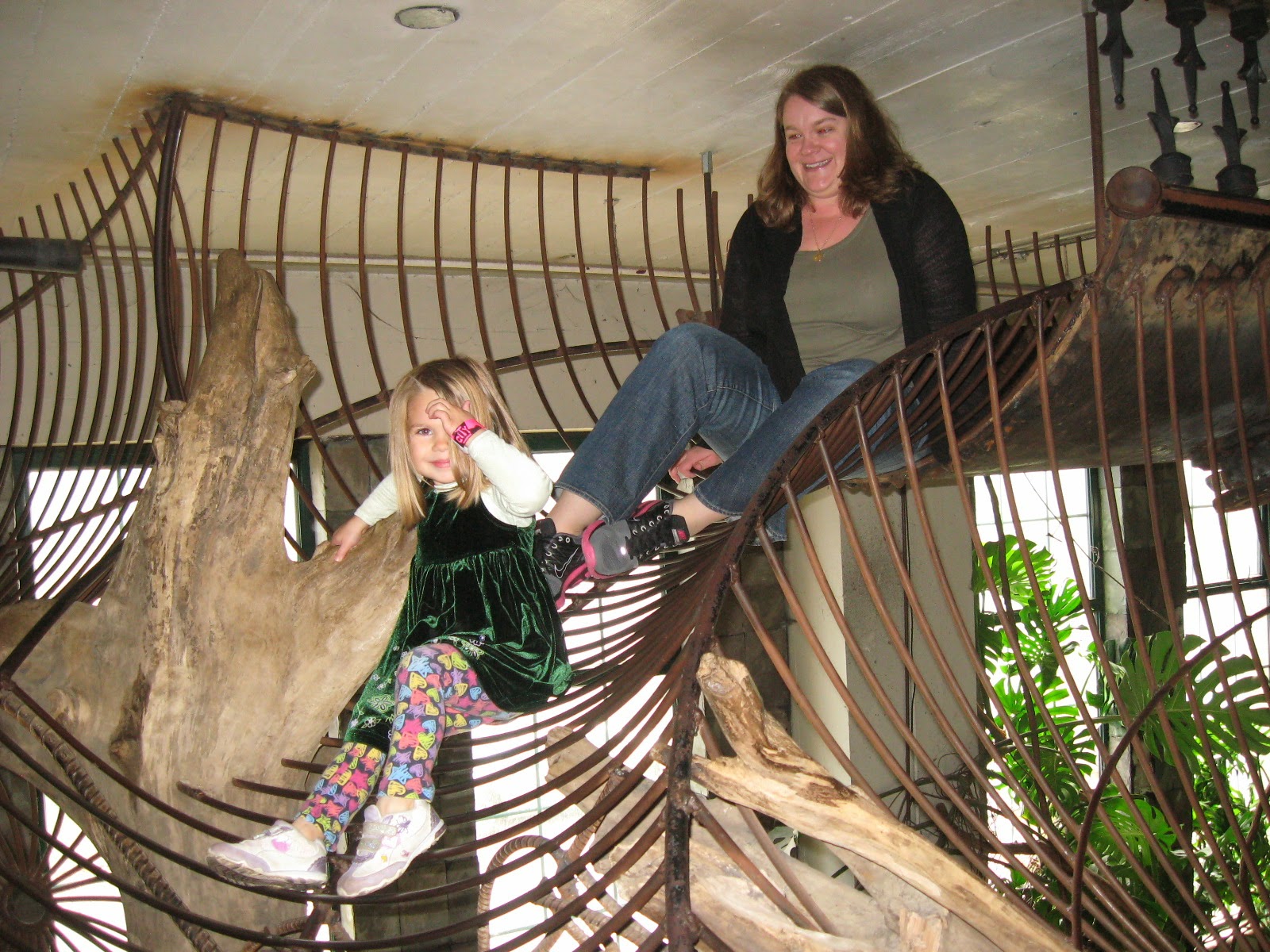 |
| I am thankful for dog parks... |
Some
were harder to decipher than others. A few syllables of gratitude had been eaten (and swallowed) before read. I bit the Wis of of "..consin Badgers and the S in "..allie Walker and Papa John" from the middle of Ian’s gratitude. In the spirit of
gratitude, he forgave me. Family was mentioned often as was friendship, humor,
health, patience, peanut butter, and chocolate. A thoughtfully provided master
list provided clues to a few truly mysterious entries and corrections for some
mismatches.
What
has stayed with me over the year besides memories of a full heart and insights
into family members (who knew my millwright brother was so sentimental?) is a growing
awareness of the many ways and places that gratitude is expressed. Not limited
to Hallmark cards, I notice displays of gratitude in ordinary moments and
extraordinary ways. With
the amount of time I spend in, with, and for museums, feeling gratitude for
them, for staff and friends, and for their place in society–all year through–is not difficult at all .
My thankfulness for museums begins with an appreciation of them as welcoming
places, empathetic and compassionate places, and as places of joy.
 1. Museums opening to more and larger parts of the community
through free and reduced admission, access and inclusion strategies. National programs like Blue Star Families at more than
2,000 museums; field-wide programs such as Museums for All; pay-as-you-will policies;
and hours and events that accommodate audience groups with special needs and
abilities at more and more museums
express an intention to lower, if not eliminate, barriers to visiting and enjoying museums.
1. Museums opening to more and larger parts of the community
through free and reduced admission, access and inclusion strategies. National programs like Blue Star Families at more than
2,000 museums; field-wide programs such as Museums for All; pay-as-you-will policies;
and hours and events that accommodate audience groups with special needs and
abilities at more and more museums
express an intention to lower, if not eliminate, barriers to visiting and enjoying museums.
2. Staff and volunteers prepared and ready with just-in-time support and
understanding. Reuniting a separated child and parent, greeting visitors in the
parking lot, giving helpful directions to a nearby restaurant, offering suggestions
for must-see exhibits, or making a simple repair to an exhibit, museum staff–especially
front-line staff–make the complex choreography of a visit to the museums work
smoothly and with patience, kindness and a smile.
3. Museums as refuge from storms–meteorological and metaphorical. Relief from rain, snow, hail, heat, and cold draws families, couples, friends, and individuals into museums to wander, pass time, connect, visit, or find solitude. In any weather, stepping into a museum can offer a reprieve from pressing duties and sorrows and a moment of time-out-of-time with the possibility of renewal.
4. Colleagues compelled to experiment, push boundaries, and take risks. The curious, the friendly provocateurs, those who challenge complacency and easy assumptions create waves that move us all forward. Thanks to their appetite for authenticity, penchant for "what if?", and straightforward questions, my thinking is inspired and challenged as are others in the museum field.
5. Museums reaching out to help one another. Museums are a far-flung community well acquainted with ways to help and support. They step forward to help after events such as Hurricane Katrina, Super Storm Sandy, 9/11, and the Japanese earthquake and tsunami. Strong and caring connections among museum colleagues are expressed in mentoring younger colleagues, offering support through difficult professional transitions, easing times of organizational uncertainty, and softening personal loss.
6. The privilege of glimpsing visitors’ thinking and ideas. Listening to, observing, and being attentive to children and adults, their language, gestures, interactions, and creations open up and give clues about what is fascinating to them, what they know and are figuring out, what they imagine and hope for, and all they can do with their strengths and resourcefulness.
7. Wholehearted expressions of joy. Years ago, I watched a family hurry into the Jump To Japan exhibition at Seattle Children’s Museum and towards the grinning CatBus from the animated film, My Neighbor Totoro. In great delight, they recited dialogue, gestured and assumed poses, bringing the film to life as a family. Joy is also expressed in a family reading together, all piled on dad; sisters seeing themselves in a Degas painting; and 5 year old practicing her new found skipping skills, leading her family to the admissions desk.


8. Uncontained expressions of the human spirit. Museums hold and share art, beauty, ingenuity, natural wonders, and discoveries from around the world and across time through which we are able to experience the wondrous, the truly awesome, the sublime, and the extraordinary in the ordinary. In these moments and masterpieces we find inspiration for new possibilities.
9. The promise of more to come. More museums to visit and learn about; generous colleagues to learn from and be inspired by; new ones to connect with; and museums’ potential to favor the friendly exchange of curiosity and creativity.









